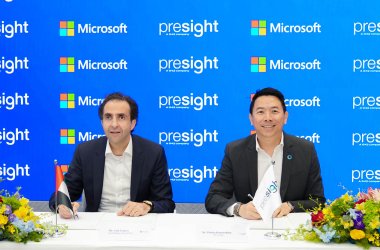 Dell completed its acquisition of Wyse Technology just last month and is now hiring, and not cutting, employees.
Dell completed its acquisition of Wyse Technology just last month and is now hiring, and not cutting, employees.
Over the next year or so, Dell plans to add more than 200 employees, from engineering to marketing, to the approximately 525 now employed by the unit, said Jeff McNaught, CMO and chief strategy officer at Dell Wyse.
Since taking over Wyse, Dell has retained all of its executives and employees, said McNaught. Dell’s objective is to increase Wyse revenue by about $400 million to $1 billion in the next year or so. Dell did not disclose the sales price of Wyse but it is betting on a few things to propel its growth.
By acquiring Wyse, Dell added a company that it already had a longstanding relationship with. Dell sold its own thin clients but if a customer wanted a Wyse-specific offering, Dell would accommodate.
McNaught said that Dell sold a lot more Wyse thin clients than its own clients. As a combined firm, Dell and Wyse will focus on integrating systems as well as engineering systems to work with specific Microsoft, Citrix or VMware platforms, he said.
Half of Wyse’s customers are in the public sector, education, government and health, but it also does well in financial services and retail.
These are the traditional thin client areas, but as enterprises figure out ways to support multiple devices — mobile, tablets and desktops — the thin client’s virtualized model has real opportunity to expand, say analysts.
Worldwide, thin client makers shipped about 4.6 million units last year, according to IDC and that’s estimated to increase to 8.3 million units by 2015 for an annual growth rate of nearly 17%.
Tom Mainelli, research director of mobile connected devices at IDC, believes that the growth of tablets could help drive commercial purchases of thin clients.
“More enterprises are embracing the idea of serving up employees a desktop that resides in the data center,” said Mainelli. “When these employees are at their desk in the office, a thin client is often the endpoint that serves them that desktop.”
The Dell Wyse revenue goals are aggressive, “but they’re certainly not impossible,” said Mainelli, who adds that Wyse’s software growth will help.
Wyse has been increasing its software offerings, notably its PocketCloud, an app that allows remote access to desktops.
McNaught said that one of the things that helps with Wyse sales is its intellectual property, specifically its firmware technology, ThinOS, an alternative to Windows embedded and Linux. The software, written in C++ and Assembly, is about 4 MB and the company claims is virus proof because it is a closed system without APIs in it.
Charles King, and analyst at Pund-IT, said he isn’t surprised by Dell’s decision to keep the Wyse staff, and said Dell has kept staff and managers on the payrolls in some of its other acquisitions. It fits Dell’s strategy of “acquiring a significant amount of expertise in an area where they don’t have a lot of expertise,” he said.
King believes Dell and Wyse will be helped by Windows 8, which is being designed to work as a mobile and desktop platform. “The thin client players believe there is a real opportunity for them,” he said.





